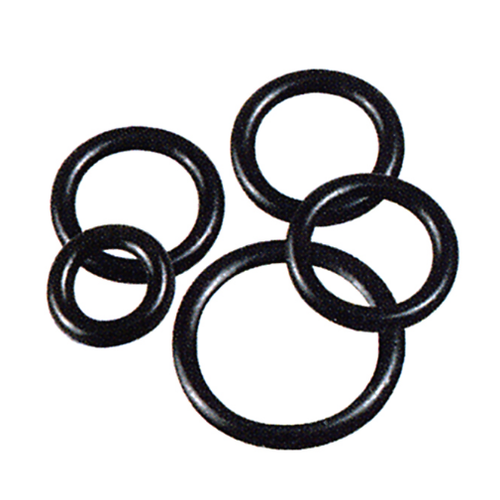Rubber O Ring Manufacturers

Contact : +91 97404 04503
Rubber O-rings are essential components in various industries, serving as mechanical seals to prevent the leakage of fluids or gases. Their primary function is to sit in a groove and compress between two or more parts during assembly, creating a tight seal that can withstand pressure. O-rings are commonly used in automotive, aerospace, and industrial machinery due to their reliability, cost-effectiveness, and ease of installation.
The manufacturing process of rubber O-rings involves several steps, beginning with the selection of the appropriate rubber compound. These compounds can vary widely depending on the intended application and the environmental conditions the O-ring will be exposed to. Common materials include nitrile, silicone, fluorocarbon, and EPDM, each offering different properties such as chemical resistance, temperature tolerance, and flexibility. The rubber is mixed with various additives, such as fillers, plasticizers, and curing agents, to enhance its properties and prepare it for molding.
Once the rubber compound is prepared, it undergoes a molding process to form the O-rings. The most common molding techniques are compression molding, injection molding, and transfer molding. In compression molding, the rubber compound is placed into a heated mold cavity, and pressure is applied to shape the material into the desired form. Injection molding involves injecting the rubber compound into a mold under high pressure, allowing for the production of more complex shapes and higher volumes. Transfer molding is similar to compression molding but allows for more precise control over the material flow, making it ideal for producing O-rings with intricate designs.
After molding, the O-rings undergo a curing process, where heat is applied to initiate a chemical reaction that cross-links the rubber molecules, giving the O-ring its final properties. This curing process is critical, as it determines the O-ring's elasticity, strength, and durability. The cured O-rings are then removed from the mold and trimmed to remove any excess material or flash, ensuring a smooth and even surface.
Quality control is a vital aspect of rubber O-ring manufacturing. O-rings must meet strict dimensional tolerances and performance standards to ensure they function correctly in their intended applications. Manufacturers often use precision measuring equipment, such as optical comparators and coordinate measuring machines, to inspect the O-rings for defects or variations in size. In addition to dimensional checks, the O-rings may undergo tests for hardness, tensile strength, and compression set to verify their mechanical properties.
Customization is another key aspect of rubber O-ring manufacturing. While standard sizes and shapes are readily available, many applications require O-rings with specific dimensions or material properties. Manufacturers can produce custom O-rings by adjusting the mold design, material formulation, and processing parameters to meet the unique requirements of each customer. This flexibility allows O-rings to be used in a wide range of applications, from sealing hydraulic cylinders in heavy machinery to preventing leaks in household plumbing fixtures.
Environmental considerations are increasingly important in the manufacturing of rubber O-rings. Many manufacturers are adopting eco-friendly practices, such as using sustainable materials, reducing energy consumption, and minimizing waste. Additionally, some manufacturers offer O-rings made from bio-based or recycled rubber compounds, providing a more sustainable option for environmentally conscious customers.
In conclusion, the manufacturing of rubber O-rings is a complex process that requires careful selection of materials, precise molding techniques, and stringent quality control measures. These small but vital components play a critical role in ensuring the reliability and safety of countless products and systems across various industries. As demand for high-performance sealing solutions continues to grow, rubber O-ring manufacturers are constantly innovating to meet the evolving needs of their customers, offering a wide range of standard and custom products that deliver superior performance and durability in even the most challenging environments.
